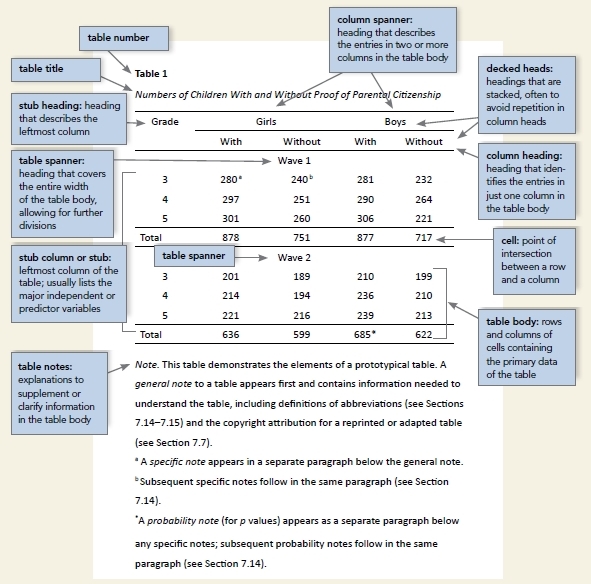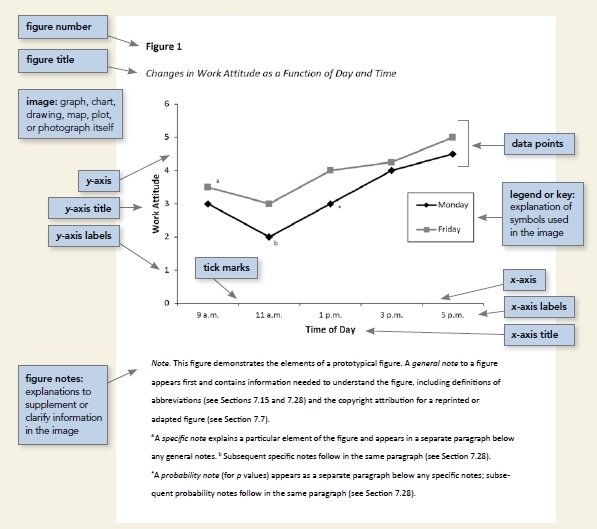Citing Tables and Figures in the Text
If you use a table or figure from another source, then you must acknowledge this original source in a note placed underneath the table or figure within the text of your paper.
Include the word Note. before your citation.
The format for citations placed underneath tables and figures is different to those used for the reference list.
Note. Adapted from “Sampling and recruitment in studies of cultural influences on adjustment: A case study with Mexican Americans,” by M.W. Roosa, F.F. Liu, M. Torres, N.A. Gonzales, G.P. Knight, and D. Saenz, 2008, Journal of Family Psychology, 22, p. 300.
"In the text, refer to every table and figure by its number - known as a callout...When you call out a table or figure, also tell readers what to look for in that table or figure.
As shown in Table 1, the demographic characteristics...
Figure 2 shows that the event-related potentials ...
...of the results of the testing (see Table 3).
...of the comparisons (see Figures 4 and 7).
Do not write "the table above" (or "below") or "the figure on page 32. Page numbers often shift during the writing process, which can lead to errors" Publication manual of the American Psychological Association, 7th ed., 2020, p. 197).
APA Style - Table Example
The example below is how to create your own table in an APA format paper or assignment.

Tables
Tables usually show numerical values or textual information arranged in columns or rows.
Table Components
Number: The table number goes above the table in bold. (e.g. Table 1)
Title: The table title goes one double-spaced line below the table number in italics in title case. (In title case the first letter of major words are capitalized).
Headings: All tables should include column headings including a heading for the left most column (aka stub heading).
Body: The table body includes all the rows and columns of a table. The body can be single spaced, one-and-a-half spaced, or double spaced.
Notes: Notes describing the contents of the table appear below the table. Not all table include table notes. Notes are double-spaced and flush left.
For further information on figures please refer to pages 199-224 of the Publication manual of the American Psychological Association, 7th ed., 2020.
Figures
What are Figures
APA considers figures "all types of graphical displays other than tables." This includes photographs, drawings, charts, graphs, or any other illustration or non-textual portrayal of information.
Figure Components
Number: The figure number goes above the figure in bold (e.g. Figure 1)
Title: The figure title appears one double-spaced line below the figure number in italics in title case. In title case the first letter of major words are capitalized.
Image: The image part of the figure is the chart, graph, photograph, drawing or other illustration itself
Legend: The figure legend (also know as a key), if used, should be positioned within the borders of the figure and explain any symbols used in the figure image.
Note: figure notes can appear below the figure to explain, describe, clarify or supplement information in the image. Not all figures include notes. Notes are double-spaced and flush left.
For further information on figures please refer to pages 225 - 250 of the Publication manual of the American Psychological Association, 7th ed., 2020.
APA Style - Figure Example
The example below is how to create your own figure in an APA format paper or assignment.
